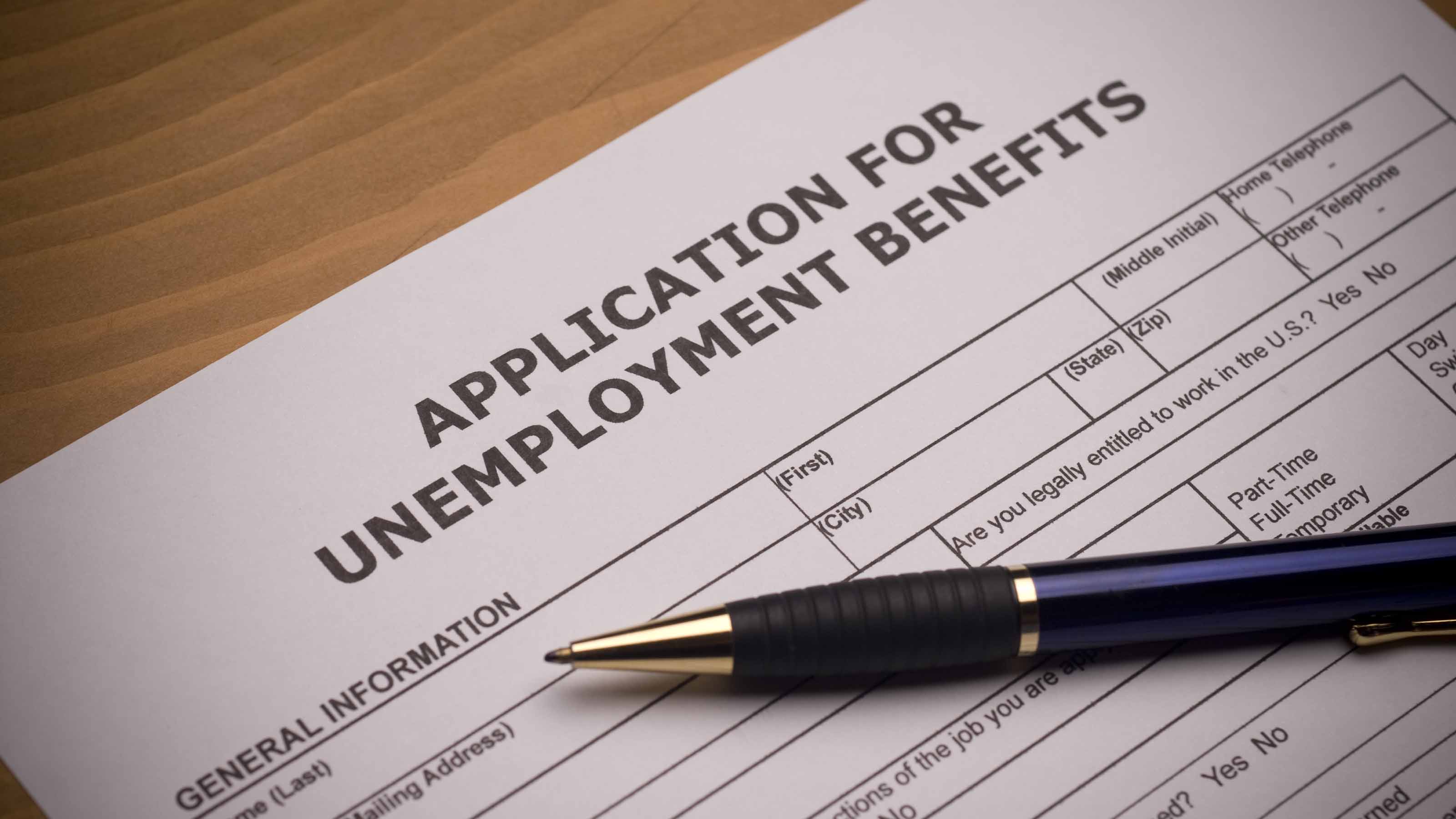15 Money Moves to Make Now to Prepare for 2021
We offer tips on how to save money and improve your finances for the coming year.

Take these financial steps before New Year’s Day and you can save on taxes, improve your credit, fine-tune your portfolio and boost your retirement savings. Here's where to start.

Fine Tune Your Portfolio
The past year has been a volatile, hot-cold-hot stretch for the stock market. Many investors are realizing that they hold more in stocks than their risk tolerance dictates; others are finding their portfolio pushed off track by big market moves. You can solve either problem by rebalancing your portfolio.
Start by figuring out how much you hold—in taxable and retirement accounts combined (be sure to include your spouse’s accounts, too, if you’re married)—in three types of broad asset categories: stocks, bonds, and cash or other securities. If you own a target-date fund or any other fund that invests in a mix of stocks and bonds, you’ll have to look up the most recent fund report to get a breakdown of how much it holds in stocks, bonds and cash. Once you’ve totaled your holdings in each of the three asset categories, calculate the percentages of each relative to your whole portfolio. Online tools at advisory services such as Personal Capital, at Morningstar.com and many online brokerages can do some of this work for you.
Depending on your results, you may need to reset your portfolio. Your calculations may show that you hold 70% of your portfolio in stocks, for instance, when your target is closer to 60%. In that case, sell your best-performing stocks first and redistribute the money into bonds or cash. In a taxable account, consider offsetting potential gains by selling some losers, too.

Boost Your Yield
Short-term interest rates will be zero-bound until at least 2023, says the Federal Reserve, and long-term rates are struggling to gain ground in a slow-growth economy with inflation only starting to stir. That makes it a challenge to find yield without taking on too much risk.
The typical corporate bond fund yields 1.78% but has an average credit quality of double-B, which falls just below investment grade (securities rated between triple-A and triple-B). Fidelity Corporate Bond ETF (symbol FCOR, $56, expense ratio 0.36%) holds higher-quality securities and ekes out a 1.80% yield. DoubleLine Total Return Bond (DLTNX, 0.73%) keeps volatility at bay by balancing high-quality government mortgage bonds with mortgage-backed debt that isn’t government-guaranteed. It yields 2.43%.
Funds that focus on high-yield debt—bonds issued by companies with ratings of double-B down to triple-C—yield an average of 4.5%. We like Vanguard High-Yield Corporate (VWEHX, 0.23%) because manager Michael Hong favors the higher-quality end of the high-yield bond world. Nearly half of the fund’s assets are invested in debt rated double-B. It currently yields 3.9%.
Investors in taxable accounts should consider municipal bonds, which generate interest income that is free from federal taxes (and sometimes from state and local taxes, too). For investors in the 35% tax bracket, for instance, Fidelity Intermediate Municipal Income (FLTMX, 0.35%) offers a taxable-equivalent yield of 1.35%.

Try Out the Next Tech Leaders
Intermittent collapses in the big tech stocks that have led the market for years have prompted some investors to diversify away from these index-dominating behemoths. To find the next tech leaders, look for firms that you can depend on for double-digit sales growth, says Goldman Sachs. Among the stocks the firm sees as future stars: Intuitive Surgical (ISRG, $738), the global leader in the fast-growing market for robot-assisted surgery. Goldman expects the stock to trade at $778 within 12 months. Software firm ServiceNow (NOW, $509) is well positioned to benefit from a wave of digital transformations as companies look to modernize their businesses. Goldman forecasts sales growth of more than 25% annually through 2023. Vertex Pharmaceuticals (VRTX, $270) leads the $10 billion market for cystic fibrosis treatments, with patent protection through 2037. But Goldman says the company also has a promising pipeline of new drugs, and it has been investing in cutting-edge research, such as gene editing, which can be used in a variety of potential treatment areas.
Or try a fund with a knack for discovering the next big tech stocks when they’re still small fry, such as DF Dent Small Cap Growth (DFDSX), with an expense ratio of 1.05%. Exchange-traded fund Ark Innovation (ARKK, $103), charging 0.75%, is a member of the Kiplinger ETF 20. It packs its portfolio with companies that will best benefit from disruptive innovation in five broad areas: genome sequencing, robotics, artificial intelligence, energy storage and block-chain technology.

Reap Rewards for Giving to Charity
Since the 2017 tax overhaul doubled the standard deduction, the vast majority of taxpayers no longer get a tax break for charitable contributions. But if you make a contribution before December 31, you may be eligible for a modest deduction, even if you don’t itemize.
The CARES Act stimulus bill enacted earlier this year included a one-time, $300 “above the line” deduction for cash contributions to charity. The provision was designed to encourage taxpayers to help charities, many of which are struggling to fulfill their mission during the coronavirus pandemic. The deduction is tied to tax returns, not individuals, so the maximum a married couple who files jointly can deduct is $300, says Lisa Greene-Lewis, tax expert for TurboTax.
The deduction is limited to cash contributions—contributions of clothing and household goods to your local Goodwill aren’t eligible. Donations to donor-advised funds aren’t eligible, either. Keep a record of your contribution with your tax documents. For donations less than $250, you need a bank record, such as a canceled check or credit card statement. For donations that exceed $250, you should obtain a written acknowledgement from the charity that shows the date of the contribution and the amount and states whether you received any goods or services in exchange for your donation.
If you still itemize, you can deduct charitable contributions made before year-end on Schedule A of your 2020 tax return. You can also deduct contributions to donor-advised funds made before New Year’s Eve. If you plan to make a major contribution, perhaps as part of your estate plan, note that a separate provision in the CARES Act permits taxpayers to deduct donations of up to 100% of their adjusted gross income. Ordinarily, the cut-off is 60% of AGI. As is the case with the above-the-line deduction, donations to donor-advised funds aren’t eligible for the higher limits.

Avoid an April Surprise
Millions of Americans filed for unemployment benefits this year. While these benefits provide an important lifeline during tough times, they could also produce an unexpected tax bill.
Unemployment benefits are taxable at the federal level, and most states tax them, too, says Andy Phillips, of H&R Block’s Tax Institute. The CARES Act expanded benefits to include an additional $600 per week through July—and that’s taxable too.
If you’re still receiving benefits, you may want to have taxes withheld on your last few benefit checks, Phillips says. For federal taxes, you can have up to 10% of your benefits withheld by filing W-4V. Contact your state for the appropriate form if you want money withheld for state taxes.
Another option is to make an estimated tax payment on the amount you expect to owe, Phillips says. The deadline for fourth-quarter estimated taxes is January 15, 2021. Paying estimated taxes will help you avoid sticker shock—and a balance you can’t pay—when you file your 2020 tax return.

Reduce the Tax Bill on Investments
If you sold some of the winners in your taxable accounts this year, the IRS will want its share, and your state may tax your gains, too. Investments held for less than a year will be taxed at your ordinary income tax rate, which ranges from 10% to 37%. Investments you’ve held longer are taxed at the long-term capital gains rate, which ranges from 0% to 23.8%.
The most effective way to reduce your tax bill is to ditch some of your underperformers. If you sell investments that have fallen below their purchase price before December 31, you can use those losses to offset your gains. After matching short-term losses against short-term gains, and long term losses against long-term gains, any excess losses can be used to offset the opposite kind of gain. If you still have unused losses, you can use up to $3,000 to offset ordinary income, and you can roll any leftover losses to the following year. Once you sell an investment at a loss, you must wait 30 days before reinvesting in it or buying a substantially identical investment.
Ordinarily, it’s not a good idea to let taxes determine whether you buy or sell an investment. But taxpayers who are eligible for the 0% capital gains rate may want to make some strategic sales—perhaps as part of an overall portfolio rebalancing—before year-end. For 2020, the 0% rate applies to taxable income of up to $40,000 on single returns, $53,600 for head-of-household filers and $80,000 for joint filers.
Keep in mind that your gains could boost your income above the 0% threshold, so you may want to consult a tax professional and calculate the amount of gains you can take before your income exceeds the cutoff. And if you’re retired, capital gains could also increase taxes on your Social Security benefits.
The Pros' Picks: 9 Stocks to Sell Now

Max Out Your Retirement Savings Plans
Despite the economic downturn, many Americans are saving more than ever. If you’re sitting on a lot of cash and have put aside enough for emergencies, consider moving some of that money into your retirement savings plans before year-end.
In 2020, you can contribute up to $19,500 in a 401(k), 403(b), federal Thrift Savings Plan or other employer-provided retirement plan, plus $6,500 in catch-up contributions if you’re 50 or older. Depending on how often you get paid, you may be able to increase the amount of money withheld from your paycheck before year-end. If you receive a year-end bonus, ask your employer if you can contribute it to your retirement savings plan.
If you don’t have a retirement plan at work, you can deduct up to $6,000 in contributions to an IRA, or $7,000 if you’re 50 or older. Single taxpayers who are covered by a workplace retirement plan can deduct traditional IRA contributions if their income is less than $65,000, with the deductible amount gradually phasing out until their income reaches $75,000. For married couples filing jointly, if the spouse making the IRA contribution is covered by a workplace retirement plan, the income phaseout is $104,000 to $124,000. You have until April 15, 2021, to contribute to an IRA for 2020, but if you invest the money now, your savings will have that much more time to grow.
If you were self-employed in 2020 or had a side hustle, you can stash even more money in a tax-advantaged account. In 2020, you can contribute up to $57,000 ($63,500 if you’re 50 or older) to a solo 401(k) plan, which is available to anyone with self-employment or freelance income. Your contributions can’t exceed your self-employment income for the year. You have until April 15, 2021, to contribute to a solo 401(k) and deduct your 2020 contributions, but you must open the account by December 31.
10 Things You'll Spend More on in Retirement

Prepare for 2021 Required Minimum Distributions
The CARES Act allowed retirees to skip required minimum distributions from IRAs and other tax-deferred plans in 2020. But it’s highly unlikely that Congress will waive RMDs in 2021, so retirees 72 and older will be required to take them next year. There are a couple of moves you can make between now and year-end that will reduce the amount you’ll have to withdraw:
- Convert to a Roth. Ordinarily, you can’t convert money in your IRA to a Roth until after you’ve taken your RMD. But with the RMD requirement waived this year, you can convert any amount of money to a Roth, says Ed Slott, founder of IRAHelp.com. You’ll pay taxes on the amount you convert, but once the money is in a Roth, you can take tax-free withdrawals of the amount you converted, and after five years, withdrawals of earnings will be tax-free, too. Better yet, you don’t have to take RMDs from a Roth.
- Transfer some of your funds to charity. IRA owners who are 70½ or older can contribute up to $100,000 directly to charity, and the contribution counts toward your RMD. While that’s not an issue this year, your contribution will reduce the size of your IRA, which will lower the amount of future required distributions. “If you’re going to give to charity anyway, this is a good deal,” says Slott.
To qualify for this tax break, the money from your IRA must be transferred directly to the charity. You can’t deduct the contribution, but it will reduce your adjusted gross income, which could make you eligible for tax breaks tied to your AGI, lower the taxes on your Social Security benefits and reduce Medicare premiums.

Use Your Credit Card Rewards Points
Your travel rewards points or airline miles may be sitting idle if you’re not traveling, but many credit cards have been offering a variety of alternative ways to redeem your points. For example, the Chase Sapphire Preferred and Reserve rewards programs recently announced the extension of the pandemic-era promotion allowing the bonuses you can redeem in the travel portal also to be used for statement credit in categories such as groceries, dining and home improvement through April 2021. Capital One extended a program that allows cardholders to redeem Capital One miles for food delivery and streaming services through December 2020. Benét Wilson, of ThePointsGuy.com, says you’re going to get the biggest bang for your buck if you use your points for travel. So consider banking your rewards points and using them for travel in 2021.

Revisit Credit Limits and Annual Fees
If your card issuer has cut your credit limit as a precaution during the pandemic, consider asking to have a higher limit reinstated. That will help your credit-utilization ratio—the percentage of your credit limit you’ve used each month—and improve your credit score.
To ask for a reinstatement of credit, call the number on the back of your card and ask to speak to the reconsideration department, says Wilson. Then ask for an explanation of the change in credit limit and make your case for raising the limit.
Credit card companies have also been canceling cards, especially ones that have seen little action lately. “A credit card issuer may cut your credit if you’re not using it,” says Wilson. If you have a credit card sitting in a sock drawer, take it out and connect an automatic payment to it.
Are you paying an annual fee for a rewards card? “Sometimes these fees are well worth it if you’re getting free upgrades, free checked bags and access to airport lounges while traveling,” says Ted Rossman, of CreditCards.com. But when your fee comes up for renewal, if you haven’t used many of the card benefits because of the pandemic, ask for the fee to be waived or lowered, he says.

Watch Out for ID Theft
This year has seen a substantial rise in identity theft. But there are a number of things you can do to avoid becoming a victim:
- Be careful sharing personal information, especially your birth date and Social Security number, which may be the only information, along with your address, that an ID thief needs to open an account in your name.
- Keep tabs on your mail. You can sign up for USPS Informed Delivery, which sends daily alerts of mail being delivered. If bills or financial statements don’t reach your mailbox, contact the sender.
- Create complex passwords to help prevent identity thieves from guessing your log-in credentials. Consider using password-management tool LastPass (free for the basic version or $3 per month for encrypted storage) to generate strong passwords and store them safely.
- Review your credit card and bank account statements. Match receipts with account statements, and be on the lookout for unauthorized transactions. You can usually set up alerts in your card issuer’s mobile app to be notified about transactions or a low balance.
- Freeze your credit with the major credit bureaus to prevent someone from applying for a credit account or utility services in your name. Placing a credit freeze at Equifax (800-685-1111), Experian (888-397-3742) and TransUnion (888-909-8872) is free and restricts access to your credit report, which makes it more difficult for identity thieves to open new accounts in your name.
- Review your credit reports. Usually, you can order one free report from each of the three national credit reporting agencies once a year at www.annualcreditreport.com. But now all three are giving people free weekly access to monitor their credit report through April 2021. When you review the reports, make sure they do not list accounts you have not opened. And consider signing up for free credit report monitoring with services such as Credit Karma and FreeCreditScore.com.

Working Remotely? Use Up FSA Funds
If you have a flexible spending account, you may have a December 31 deadline to use the balance for qualified medical expenses. (Your employer may offer a grace period until March 15, or it may permit you to roll over up to $550 to next year.) Especially if you delayed medical appointments or procedures because of the pandemic, you may wind up with more money left over than expected in your FSA. Thanks to a change in the law, feminine-hygiene products and over-the-counter drugs purchased January 1, 2020, or later are reimbursable from an FSA or health savings account without a prescription, so you could stock up on medications such as cough suppressants, pain relievers and antihistamines. See a list of eligible items at www.fsastore.com/fsa-eligibility-list.aspx.
If you have a dependent-care FSA, coronavirus-related closures of day cares, summer camps and other child-care services may have thrown off your plans for spending the funds. Keep in mind that you can use them for a babysitter or nanny who cares for your children while you work—even if you work from home. But you cannot use the money for educational expenses, such as tuition or homeschooling, says David Speier, managing director of benefits accounts for consultant Willis Towers Watson.

Manage HSA Contributions and Withdrawals
You have until April 15, 2021, to make a 2020 contribution to a health savings account. But now is a good time to plan how much you’ll stash. The 2020 maximum contribution is $3,550 for those with self-only coverage or $7,100 for those with family coverage (plus an additional $1,000 if you are 55 or older by the end of 2020).
Unlike FSA funds, HSA savings are yours to use for qualified medical expenses at any time in the future—no reimbursement deadline applies, and the balance doesn’t expire. Even if you don’t plan to tap your HSA anytime soon, round up this year’s receipts for HSA-eligible expenses and keep them in a safe place in case you decide to submit them for reimbursement down the road.

Squeeze in Medical Appointments
If you have met your health plan deductible for 2020, scheduling any needed medical appointments before the end of the year could save you money. If you wait until 2021 for the doctor visits, you may have to pay the full cost until you meet your deductible. Rather avoid an in-person appointment? See whether your physician offers telehealth visits—which allow you to consult clinicians on a video chat or phone call—and check how your insurance plan covers such appointments. Virtual visits may be sufficient for, say, sessions with a mental-health therapist or for regular check-ins to manage a chronic condition.

Don’t Forget to Tip
The rules for holiday tipping are a little different this year. Delivery drivers are working double-time, and service industry workers are putting their health on the line. A little something extra could go a long way. At the same time, you may have had a hiatus from a housekeeper, hair stylist or day care provider who could use a bonus this time of the year.
Get Kiplinger Today newsletter — free
Profit and prosper with the best of Kiplinger's advice on investing, taxes, retirement, personal finance and much more. Delivered daily. Enter your email in the box and click Sign Me Up.
-
 How Much Does Your Car Model Cost to Insure?
How Much Does Your Car Model Cost to Insure?Car insurance rates vary by make and model. Find out if your car is raising or lowering your premium.
By Rachael Green
-
 Six Ways to Pay Off High-Interest Debt (and Still Save for the Future)
Six Ways to Pay Off High-Interest Debt (and Still Save for the Future)Get out of debt and reach your goals sooner by starting with a well-thought-out plan.
By Kiplinger Advisor Collective
-
 What to Do With Your Tax Refund: 6 Ways to Bring Growth
What to Do With Your Tax Refund: 6 Ways to Bring GrowthUse your 2024 tax refund to boost short-term or long-term financial goals by putting it in one of these six places.
By Rachael Green
-
 What Does Medicare Not Cover? Eight Things You Should Know
What Does Medicare Not Cover? Eight Things You Should KnowHealthy Living on a Budget Medicare Part A and Part B leave gaps in your healthcare coverage. But Medicare Advantage has problems, too.
By Donna LeValley
-
 CPI Report Puts the Kibosh on Rate Cuts: What the Experts Are Saying About Inflation
CPI Report Puts the Kibosh on Rate Cuts: What the Experts Are Saying About InflationCPI Consumer price inflation reared its ugly head to start the year, dashing hopes for the Fed to lower borrowing costs anytime soon.
By Dan Burrows
-
 Fed Leaves Rates Unchanged: What the Experts Are Saying
Fed Leaves Rates Unchanged: What the Experts Are SayingFederal Reserve As widely expected, the Federal Open Market Committee took a 'wait-and-see' approach toward borrowing costs.
By Dan Burrows
-
 15 Reasons You'll Regret an RV in Retirement
15 Reasons You'll Regret an RV in RetirementMaking Your Money Last Here's why you might regret an RV in retirement. RV-savvy retirees talk about the downsides of spending retirement in a motorhome, travel trailer, fifth wheel or other recreational vehicle.
By Bob Niedt
-
 CPI Report Keeps the Fed on Track: What the Experts Are Saying About Inflation
CPI Report Keeps the Fed on Track: What the Experts Are Saying About InflationCPI Disinflation in key areas of consumer prices should help the Federal Reserve stick to its policy path of gradual cuts to interest rates.
By Dan Burrows
-
 Blowout December Jobs Report Puts Rate Cuts on Ice: What the Experts Are Saying
Blowout December Jobs Report Puts Rate Cuts on Ice: What the Experts Are SayingJobs Report The strongest surge in hiring since March keeps the Fed on hold for now.
By Dan Burrows
-
 Fed Sees Fewer Rate Cuts in 2025: What the Experts Are Saying
Fed Sees Fewer Rate Cuts in 2025: What the Experts Are SayingFederal Reserve The Federal Reserve cut interest rates as expected, but the future path of borrowing costs became more opaque.
By Dan Burrows
